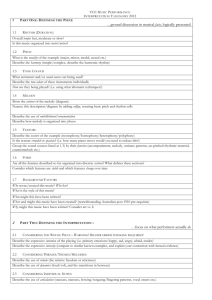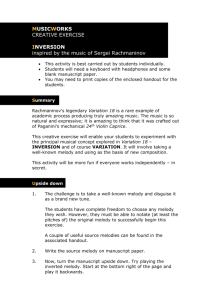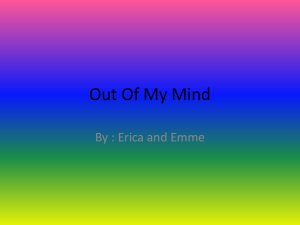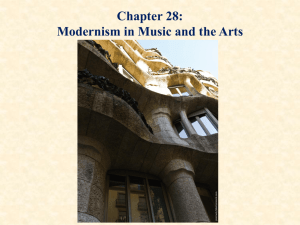Literary Terms 1-30
advertisement
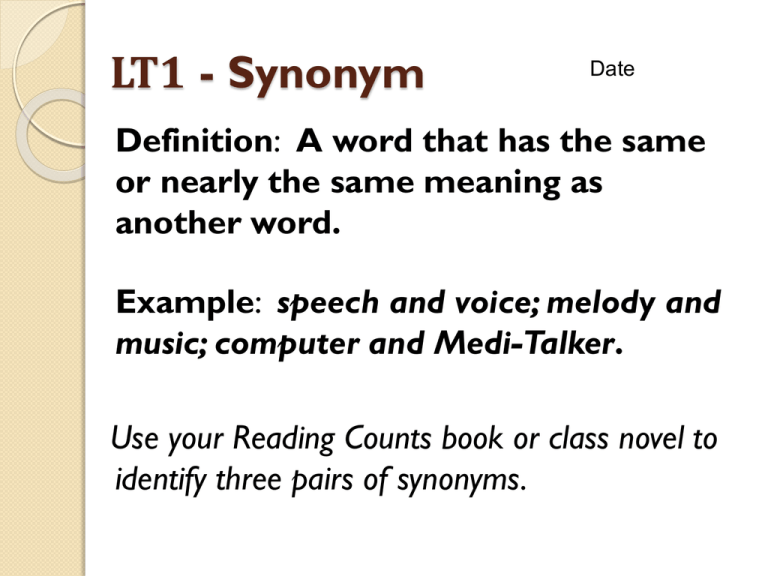
LT1 - Synonym Date Definition: A word that has the same or nearly the same meaning as another word. Example: speech and voice; melody and music; computer and Medi-Talker. Use your Reading Counts book or class novel to identify three pairs of synonyms. LT2 - Antonym Date Definition: A word that means the opposite of another word. Example: voice and silence; verbal and nonverbal; paralyzed and mobile. Use your Reading Counts book or class novel to find three pairs of antonyms. LT3 - Exposition Date Definition: The very first part of the plot in which the background information, setting, characters are introduced and explained. What do we learn in the Exposition about Out of My Mind? (3-5 lines) LT4 - Rising Action Date Definition: The part of the plot in which the conflict is revealed and the plot begins developing. Example: Melody meets Rose; Melody gets her computer… Give two additional examples of rising action in your class novel. LT5 - Climax Date Definition: Moment of great suspense in the plot of a literary work; the turning point of the story. There are many interpretations of the climax of Out of My Mind. Given the above definition, what event do you consider to be the climax and why. LT6 - Falling Action Date Definition: The falling action is the series of events which take place after the climax and lead to the resolution. The suspense begins to lessen. Example: In Out of My Mind, an example of falling action is when Penny comes home from the hospital. Why does this event belong in the Falling Action? Bonus: List another event from the Falling Action! LT7 - Resolution Date Definition: The part of the plot where the conflict is over and the loose ends are all tied up. Example: Melody is working on Miss Gordon’s autobiography project. She is now part of the regular school system and has a voice through words. As you can see language is very powerful, what are three powerful words to you? LT8 - External Conflict Date Definition: A conflict that occurs between a character and another (outside) force such as nature, another person, illness, etc. Example: Melody has cerebral palsy—she can’t walk or talk… Using your Reading Counts book, describe an external conflict the character is facing and why (3-5 lines). LT9 – Internal Conflict Date Definition: A conflict that occurs within a character’s mind such as a decision that has to be made or a problem with one’s self-confidence, etc. Example: Go to the Phillies’ game or stay home and read, Out of My Mind. Using your Reading Counts book, describe an internal conflict the character is facing and why (3-5 lines). LT10 - Context Clues Date Definition: Information from the reading that helps the reader to identify the meaning of an unknown word. “Mrs. V. told Melody that she needed to learn to advocate for herself so that people wouldn’t overlook her!” In your own words, what does advocate mean? Date LT11 - Dynamic Character Definition: A character that changes significantly throughout the story (they are different at the end than they were in the beginning). Describe how Melody is a dynamic character (35 lines). LT12 - Static Character Date Definition: A character that stays the same throughout the story. Describe how Claire is a static character (35 lines). LT13 - Fact Date Definition: Something that can be proven to be true. Example: The required summer reading book was Out of My Mind. Write your own, unique example here. LT14 - Opinion Date Definition: A statement, belief that cannot be proven. Example: Out of My Mind is Sharon Draper’s best book ever! Write three opinions here. LT15 - Fiction Date Definition: A story that is the product of the author’s imagination, rather than fact or truth. Example: Unstoppable, Wonder, and Out of My Mind List three examples of your favorite fictional stories here. LT16 - Nonfiction Date Definition: Writing that tells about real people, places and events. Example: Melody’s favorite book is “The Theory of Everything” by Stephen Hawking. List two examples of nonfiction. Date LT17 - Figurative Language Definition: This cannot be taken literally because it is written to create a special feeling or effect. Types of Figurative Language: * Alliteration * Hyperbole * Idiom * Imagery * Metaphor * Onomatopoeia * Personification * Simile LT18 - Alliteration Date Definition: A phrase in which the initial (first) consonant sound is repeated. Example: Melody made me mad! Use your Reading Counts book or class novel to find your own unique example. LT19 - Hyperbole Definition: An exaggeration used to emphasize a point. Example: After the Whiz Kids championship round, Melody was so hungry, she could eat a horse. What point is being made? LT20 - Idiom Date Definition: An expression that is unique to a certain language and has developed its meaning over time. Example: Melody was disappointed the flight was cancelled – but it was raining cats and dogs! What does this expression mean? Think of and write down an idiom. LT21 - Imagery Date Definition: Words that appeal to the five senses and enhance the reader’s experience. Example: Melody knew the pitterpatter of the rain against the window meant the flight would be cancelled. What sense is the above example appealing to? LT22 - Metaphor Date Definition: A comparison of two unlike things that does NOT use the words “like” or “as.” Examples: “Melody is a shining star on the Whiz Kids quiz team.” “After the championship round and a hot lunch, Melody is a sleepy bear.” Write a metaphor that might be found in your Reading Counts book. LT23 - Onomatopoeia Date Definition: Words whose sounds express their meaning. Example: “Freddy is almost 12. He uses an electric wheelchair. He whizzes around the room, screeching, ‘Freddy go zoom!’” Find three examples of Onomatopoeia in the above example. Write an example of Onomatopoeia you might find in your RC book. LT24 - Personification Date Definition: Giving human qualities to something that is not human. Example: Melody’s wheelchair had a mind of its own. Write an example of personification that might be found in your Reading Counts book. LT25 - Simile Date Definition: A comparison of two unlike things that uses the words “like” or “as.” Examples: “Melody was as sharp as a tack during the championship round.” Write an example of a simile that might be found in your Reading Counts book. LT26 - Flashback Date Definition: Used to present action that occurs before the beginning of the actual story (sometimes like dreams or recall of the past). Example: “My father brought home a small stuffed cat for me when I was really little—less than a year old…” ~Melody Why do you think an author includes a flashback? LT27 - Foreshadowing Date Definition: The device used by an author to present hints or clues about future events in the story. Example: “I believe in me. And my family does. And Mrs. V. It’s the rest of the world I’m not so sure of…” ~ Melody What is the author hinting at? LT28 - Genre Date Definition: A category used to classify literary works (i.e., science fiction, mystery, historical fiction, realistic fiction, fantasy, etc.). Example: An example of Realistic Fiction is Out of My Mind. What is your favorite genre? Give an example (2-3 lines). LT 29 - Inference LT20 Definition: An educated guess based on facts paired with experience. Example: I wheeled into the kitchen and my mother took one look at my clothes and said, “Melody, are you wearing THAT to school?" I could infer not only by her question, but also from the look on her face, that I should change. What clues suggest that Melody should change? LT 30 - Irony Date Definition: This is the use of words where the meaning is the opposite of what is expected to happen.. Example: At last Melody has a voice…but not everyone around her is ready to hear it. Explain why the above example is irony.

